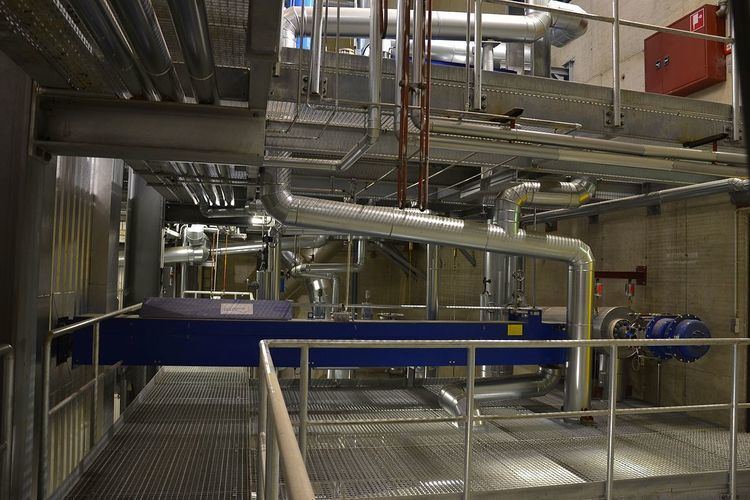 | ||
A sootblower is a device for removing the soot that is deposited on the furnace tubes of a boiler during combustion.
Contents
Types of soot blowers:
- Wall Blowers also known as IRs (Insertable Rotating)
- Long Retractable Soot Blower (LRSB) or IK (Insertable Kinetic)
- Air Heater Blower.
Steam blowing medium:
Steam is normally used as a medium for blowing away the soot since capital cost of steam pressure reducing equipment and drain is less than the cost of compressors, motors and control of air systems.
Reduced efficiency
Soot deposited on the heating surfaces of a boiler acts as a heat insulator. The result is that less heat is transferred to the water to raise steam and more heat is wasted up the chimney. This leads to higher fuel consumption and/or poor steaming.
Soot fires
A soot fire can be damaging to a boiler because it can cause localized hotspots to occur in the tubes. These hotspots may reach temperatures that weaken the materials of the tubes. Sootblowers reduce the risk of soot fires and their resulting damage.
Operation
A sootblower may be operated manually or by a remotely controlled motor. The soot, which is removed from the heating surfaces, will be blown out with the flue gases. If the boiler is equipped with a dust collector, it will trap the soot. Otherwise, the soot will be ejected into the outside air through the chimney stack.
